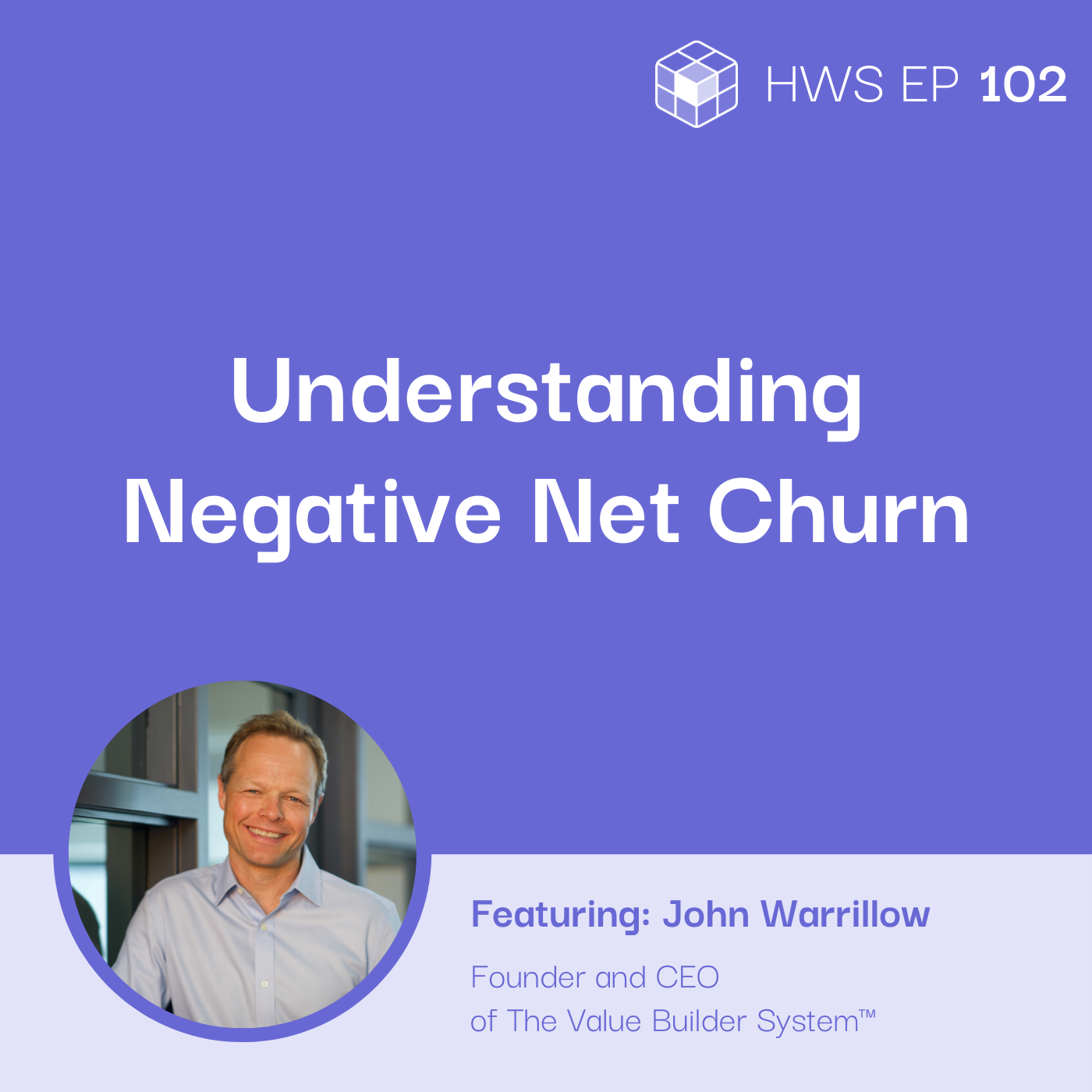Listen on:
Table of Contents:
Problem: How do SaaS teams lower their churn rate?
A common mistake among many SaaS companies is that a lot of them plan for the awareness to conversion steps. They often consider customer support to be the main driver of retention. The most important part of the sales process is actually retention, and the hardest part about it is making sure your customers actually stay. In today’s episode, Award-winning author, speaker, and business coach helps us understand how do SaaS teams lower their churn rate?
It’s a function of how much revenue, net contribution effectively you get per customer. That is largely determined by the true rate of those customers. So, the higher your churn rate, the lower your out to be generally. And so, that has a big impact, and net promoter score is obviously a big predictor of churn. The beauty of net promoter score and what Reichheld talks a lot about is it’s a predictive future forward-looking indicator.
Turning Customers into Advocates
Retention is not simply about responding to the customer’s concerns after they’ve signed the dotted line. It’s all about delighting them and giving them an outstanding experience by understanding what they need, how they use your products and services and continuously looking for better ways to solve their problems.
If your product is not in the face of your customers every day, you run the risk of effectively like ships passing at night, tree falling in the forest.
Step # 1: Study the numbers and reasons behind the churn
John emphasized the most crucial part is the first step, which is understanding what kind of churns are you getting. It’s very important to pick the numbers apart. Separate the churns that could be avoided and the unavoidable ones. Make sure to take a look at the data and ask these questions:
- What was their onboarding experience like?
- How often did the customer service or support team call the customer?
- How do they use your product?
- What are the behavior patterns when using your product?
By understanding what can be learned from this data, you’ll be able to plan for achieving the negative net churn.
Understanding Negative Net Churn
The revenue from negative net churn is something that investors are most concerned about. They’re looking at both the gross number as a percentage, how much revenue you lose based on the percentage, and how much you had coming into the month. But, basically, the net churn is the difference between your gross churn, your upgrade, and expansion revenue. Having a positive net churn is the holy grail of expansion. So, understanding the data for upselling and upgrades is crucial for finding the leaky bucket that causes churn, and reasons why customers love your product and services.
So whenever you upsell your existing customers and the holy grail, of course, is when your net churn, is actually negative. Positive churn. And that sounds like an oxymoron, but it actually means you’re picking up more expansion revenue than you’re losing in gross churn. So, that’s a very nice northern light to try to strive for. It’s not always possible, but it is something to try to strive for if it’s entirely possible.
Step #2: Navigate your future with Net Promoter Score
The Net Promoter Score is the biggest predictor of churn. It takes into consideration, measures or, likelihood that, they’re going to refer somebody or repurchase from your business. Those are future-looking indicators. It helps you understand how you were able to obtain and maintain that customer.
The Most Important Way to Boost Your NPS is Your Onboarding Process
The first month of the relationship with your customer sets the tone for the rest of the partnership. One of the biggest mistakes that the customer service team often makes is to think that customers will figure it out for themselves. The first 30 days set a unique opportunity, to really impact the way your customer thinks about your product. Once that period is over and they’ve decided if your product solves a specific need for them or not, it will be difficult to change their perspective on the succeeding months.
Wow them with Five to Six Key Features
Choose five to six features that your product offers, features that drive your net promoter score through the roof. Then, design your onboarding process against those and go through with your customer how these features can improve their lives. How do you do this?
Study and Understand Your Customers
Remember that your customers are actually a set of people that works in a business who have challenges and responsibilities. While it’s tempting to them as a cold and distant entity, they’re human beings with authentic experiences. Always remember the roles that your customer play in the organization. The needs of the decision-maker are different from the actual user. Highlight features that are important to each one of them, especially during the onboarding.
One of the other nice things about NPS is you can look at cohorts, right? So, you can look at customers, one you got through a referral. And look at that as a cohort and compare their net promoter score, apples to apples with those who you got through direct, or organic search, or whatever other acquisition mechanisms. And that’s one of the beauties of it. You can go so far as to say geographic locations, different salespeople, different account managers, and relative churn rate of each of them.
Step # 3: Talk About Customizable Features
Another important thing for your customers to know is how much tailoring or customization they can do to the product or service. So, any customizations that a customer can do to your software should be understood by the customer. At the same time, tracking the usage of these customizable features. By understanding how often and how they actually use these will help you understand what’s important to your customers
So any customizations that a customer can do to your software, I think that’s a really key milestone to be tracking. Usage of key features is that other milestones make sure you’re tracking.
Step # 4: Keep Surprising Your Customers
Productized services are often seen as transactional and straightforward businesses. But, what SaaS companies fail to realize is that because it’s a subscription business, it’s a long-term relationship. It’s important to surprise them with new features for new problems that emerge throughout the engagement. This is why it’s important to review how your customers are using the products and how your innovation team is responding to the new challenges of your customers.
It’s basically a long-term relationship, and you’re signing up hopefully forever. There is a relationship aspect to it, and the best relationships are ones where there is a degree of spontaneity that you’re surprising your spouse or significant other occasionally.
What are the most important data points to look at when improving your churn rate, especially when targeting?
(00:36:07) “What you want to really focus on, I think, is the LTV (Lifetime Value) to CAC (Customer Acquisition Cost) because the benefit of targeting smaller companies, your cap is usually much lower because it’s easier to win them. There aren’t 15 layers of decision-making. It doesn’t have to go through the CFO. It’s like, if the owner wants it, ‘boom’, decides with one call. Right?”
John Warrillow Recommends the Following Books and Resources from His Websites
- Free Gifts From John
- SOPs E-book
- Built to Sell Podcast
- All Books by John Warrillow
- Free Copy of The Rainmaker’s Dilemma: How Your Greatest Strength Becomes a Debilitating Weakness
This interview is part of the How We Solve podcast. To hear more from industry experts who are solving everyday business problems, check us out on Spotify, Apple Podcasts, and on our website.
About the guest

John Warrillow
John Warrillow is the founder of The Value Builder System™, a simple software designed for building the value of a company. The software is currently used by thousands of businesses worldwide. He is the author of the bestselling book, Built to Sell: Creating a Business That Can Thrive Without You, which was recognized by both Fortune and Inc magazines as one of the best business books of 2011. John host Built to Sell Radio, where he interviews hundreds of founders about their exit. Forbes ranked his podcast as one of the ten best podcasts for business owners.
How people can people reach John:
Official Website: Built to Sell | Value Builder
Twitter: @JohnWarrillow
Listen on:
